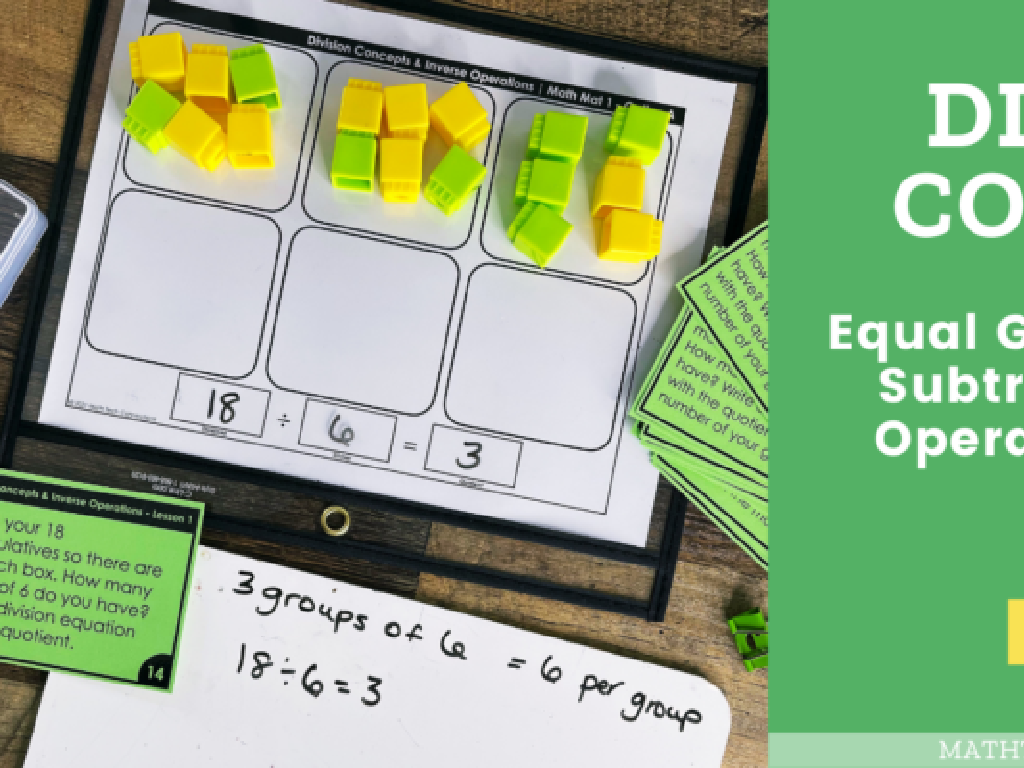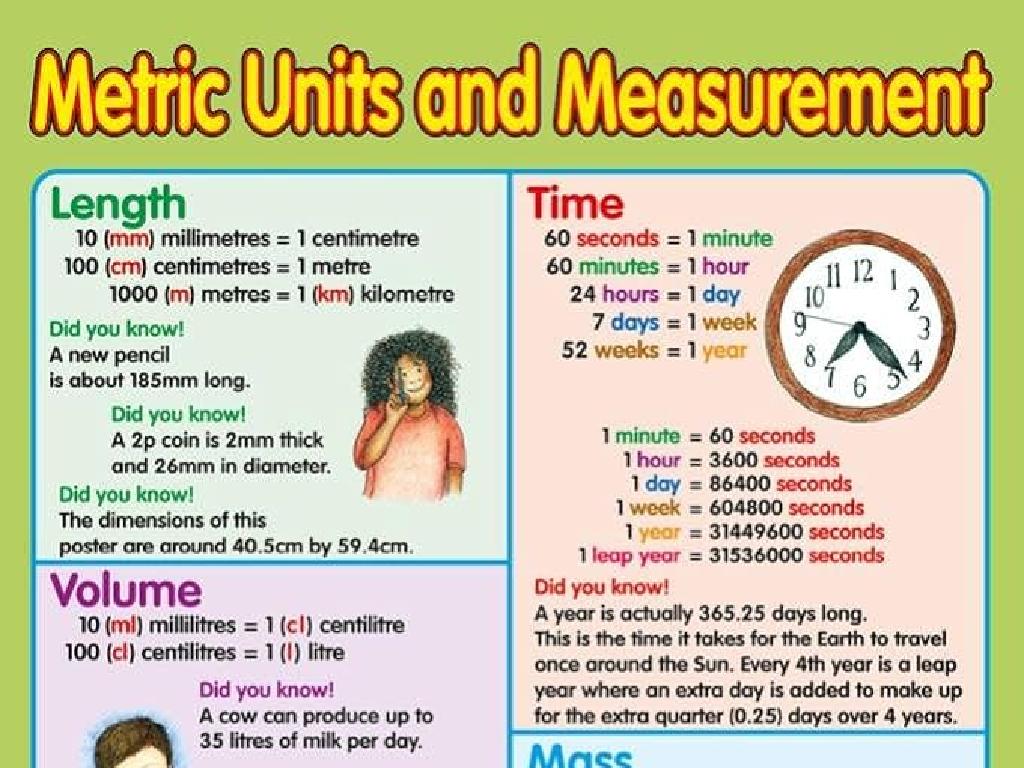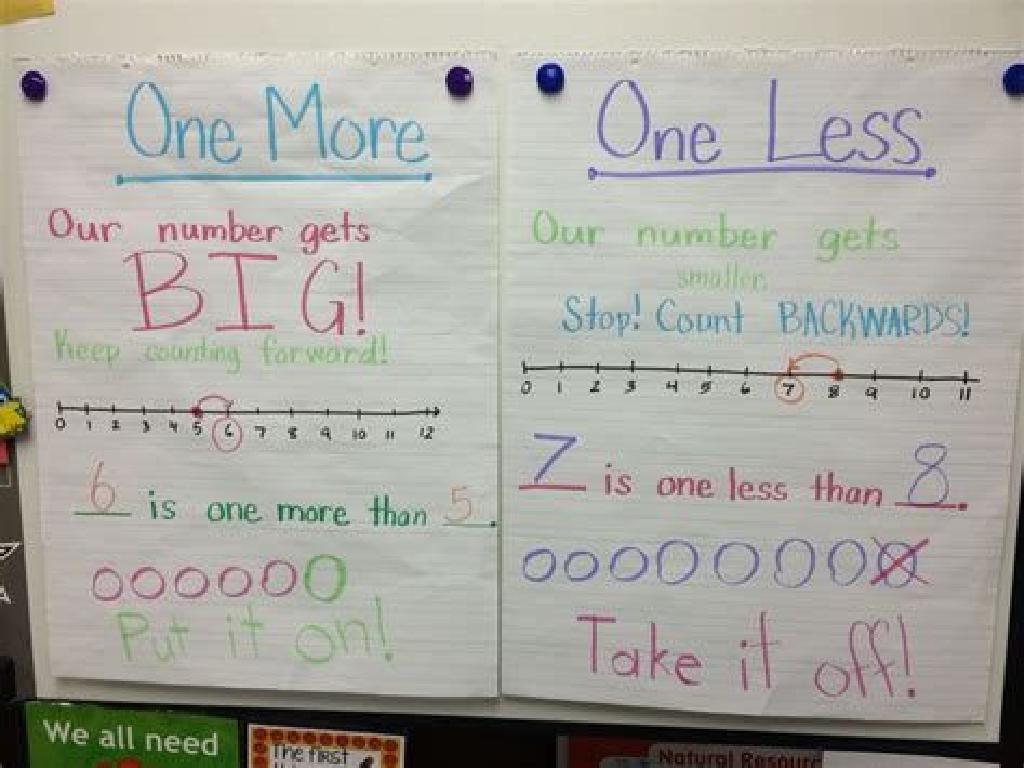Identify Urban, Suburban, And Rural Areas
Subject: Social studies
Grade: Second grade
Topic: Geography
Please LOG IN to download the presentation. Access is available to registered users only.
View More Content
Exploring Our Living Spaces
– Urban areas: Cities with lots of buildings
– Skyscrapers, busy streets, lots of people
– Suburban areas: Homes with yards near cities
– Single-family houses, schools, parks nearby
– Rural areas: Countryside with farms and forests
– Open spaces, fewer people, more nature
– Identifying characteristics of each area
|
This slide introduces the concept of different living areas to second-grade students. Urban areas are described as busy cities with many buildings and people. Suburban areas are presented as quieter neighborhoods with individual homes and green spaces, usually located around cities. Rural areas are explained as the countryside, with farms, forests, and more nature. The goal is for students to recognize these areas based on their characteristics and understand that different environments offer different lifestyles. Encourage students to think of examples from their own experiences or places they’ve seen on TV or in books. Ask them to describe what makes each area unique and discuss the types of activities and communities found in each.
Exploring Urban Areas
– Urban areas are big cities
– Cities with lots of buildings and people
– Skyscrapers and busy streets
– Tall buildings, crowded places
– Many shops and activities
– Places to eat, play, and shop
– Examples: New York City, Los Angeles
– Real cities that are urban areas
|
This slide introduces students to the concept of urban areas, which are characterized by their large populations and dense infrastructure. Use pictures of New York City and Los Angeles to give students a visual understanding of urban areas. Discuss the features of urban life, such as the presence of tall buildings, also known as skyscrapers, and the variety of shops and activities available. Explain that urban areas are bustling with energy and are often the centers of business, culture, and social services. Encourage students to think about what it would be like to live in such a busy place and to share any experiences they may have had visiting a big city.
Exploring Suburban Areas
– Suburbs are near cities
– Suburban commutes to city
– People travel to work in the city
– Suburbs have houses and schools
– You’ll find playgrounds and schools too!
– More space for yards and gardens
– Look for big yards and pretty gardens!
|
This slide introduces students to the concept of suburban areas, which are residential zones located on the outskirts of a city. Emphasize that while suburbs are close to the urban hustle and bustle, they offer a quieter environment with more space for homes and recreational areas. Highlight the daily routine of many suburban residents who commute to the city for work. Use pictures or stories to illustrate typical suburban settings with detached houses, lawns, and community parks. Encourage students to think about any suburban areas they might have visited and what they noticed about them, such as the presence of single-family homes with yards, which are less common in urban settings.
Exploring Rural Areas
– Rural areas: Countryside locations
– Far from busy cities, peaceful with nature
– Abundance of open land and farms
– Fields for crops and space for animals
– Forests are common in rural areas
– Woodlands with wildlife and nature trails
– Rural life includes farm animals
– Cows, chickens, and more live with families
|
This slide introduces students to the concept of rural areas, emphasizing their distance from urban cities and their connection to nature and agriculture. It’s important to convey the tranquility and open spaces that characterize rural living. Use examples like farms, which provide food, and forests, which are home to wildlife and offer recreational opportunities. Highlight the presence of farm animals as part of daily life in these areas. Encourage students to think about the differences between their own community and rural areas, and if possible, share personal experiences or stories related to rural life.
Comparing Urban, Suburban, and Rural Areas
– Urban areas: Busy and crowded
– Cities with lots of buildings and people
– Suburban areas: Quieter with more space
– Neighborhoods with houses and lawns
– Rural areas: Peaceful and natural
– Countryside with farms and forests
– Differences between the areas
|
This slide aims to help second-grade students understand the characteristics of urban, suburban, and rural areas. Urban areas are like big cities with lots of buildings, cars, and people everywhere. Suburban areas are like the neighborhoods where there might be schools, parks, and houses with yards. Rural areas are out in the countryside where there are more farms, animals, and open spaces. Use pictures to illustrate each type of area and encourage students to think about what they might see, hear, and do in each place. Ask students if they have visited or lived in any of these areas and to share their experiences.
Activity Time: Draw Your Area!
– Be a geographer for a day
– Draw where you live
– Use colors and shapes to show buildings, houses, or fields
– Label your area type
– Is it a busy city, a quiet town, or the countryside?
– Share with the class
– Explain your drawing to your friends
|
This activity encourages students to think about their own environment in terms of urban, suburban, or rural classifications. Provide a brief review of the characteristics of each area type before they begin drawing. For urban areas, mention tall buildings, lots of people, and cars. For suburban, talk about houses with yards, schools, and parks. For rural, describe open spaces, farms, and fewer houses. Have drawing materials ready and ensure each student has enough space to work. As they share, guide them to articulate why they labeled their area as they did, reinforcing their understanding of the geographical concepts. Possible variations of the activity could include drawing their dream neighborhood or comparing their drawings with pictures of different area types.





